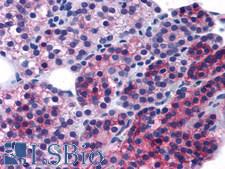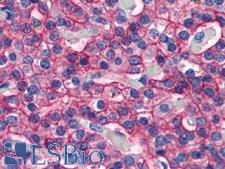Login
Registration enables users to use special features of this website, such as past
order histories, retained contact details for faster checkout, review submissions, and special promotions.
order histories, retained contact details for faster checkout, review submissions, and special promotions.
Forgot password?
Registration enables users to use special features of this website, such as past
order histories, retained contact details for faster checkout, review submissions, and special promotions.
order histories, retained contact details for faster checkout, review submissions, and special promotions.
Quick Order
Products
Antibodies
ELISA and Assay Kits
Research Areas
Infectious Disease
Resources
Purchasing
Reference Material
Contact Us
Location
Corporate Headquarters
Vector Laboratories, Inc.
6737 Mowry Ave
Newark, CA 94560
United States
Telephone Numbers
Customer Service: (800) 227-6666 / (650) 697-3600
Contact Us
Additional Contact Details
Login
Registration enables users to use special features of this website, such as past
order histories, retained contact details for faster checkout, review submissions, and special promotions.
order histories, retained contact details for faster checkout, review submissions, and special promotions.
Forgot password?
Registration enables users to use special features of this website, such as past
order histories, retained contact details for faster checkout, review submissions, and special promotions.
order histories, retained contact details for faster checkout, review submissions, and special promotions.
Quick Order
PathPlusTM CASR/Calcium Sensing Receptor Antibodies
Calcium-sensing receptor (CASR) functions as a sensor in the parathyroid and kidney to determine extracellular calcium concentration and to maintain calcium homeostasis. CASR regulates both secretion of parathyroid hormone and excretion of urinary calcium. Mutations that inactivate CASR cause familial hypocalciuric hypercalcemia, which is also correlated with hyperparathyroidism. On the other hand, mutations that activate CASR cause autosomal dominant hypocalcemia. Hjalm et al. (2001) and Awata et al. (2001) have identified the binding of filamin-1 to the C-terminal tail of CASR, which may contribute to its localization in caveolae, link it to the actin-based cytoskeleton, and participate in CASR-mediated activation of MAPK.
References: The UniProt Consortium. Nucleic Acids Res. 47: D506-515 (2019); Nucleic Acids Res. 2016 Jan 4;44(D1):D733-45, PMID:26553804
2 PathPlusTM Antibodies


☰ Filters
Products
Antibodies
(2)
Type
Primary
(2)
Target
CASR/Calcium Sensing Receptor
(2)
Reactivity
Human
(2)
Mouse
(1)
Rat
(1)
Bat
(1)
Bovine
(1)
Chicken
(1)
Dog
(1)
Hamster
(1)
Horse
(1)
Monkey
(1)
Pig
(1)
Rabbit
(1)
Application
IHC
(2)
IHC-P
(2)
Host
rabbit
(2)
Product Group
GPCR Database Antibodies
(2)
PathPlus Neuro
(2)
Clonality
polyclonal pc
(2)
Format
Unconjugated
(2)
Epitope
N-Terminus
(2)
Publications
No
(2)

Neuroscience
Fast Shipping
CASR/Calcium Sensing Receptor Rabbit anti-Human Polyclonal (N-Terminus) Antibody
Human
IHC, IHC-P
Unconjugated
50 µg/$395

Neuroscience
Fast Shipping
CASR/Calcium Sensing Receptor Rabbit anti-Human Polyclonal (N-Terminus) Antibody
Chicken, Bovine, Rat, Hamster, Pig, Horse, Bat, Rabbit, Mouse, Dog, Human, Monkey
IHC, IHC-P
Unconjugated
50 µg/$395
Viewing 1-2
of 2
product results











